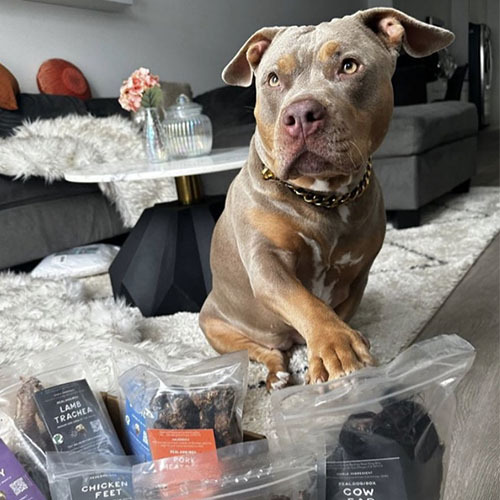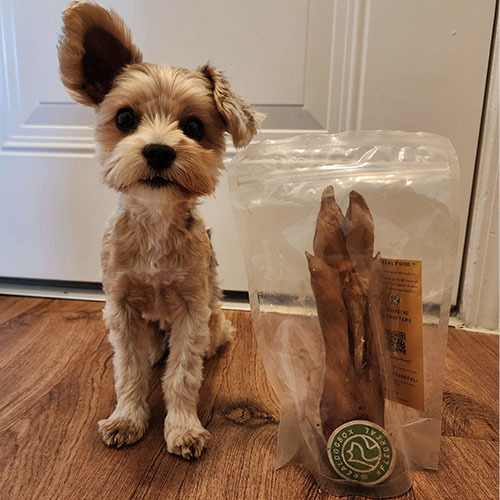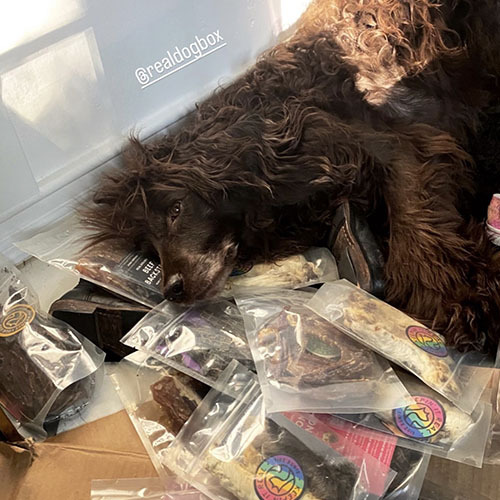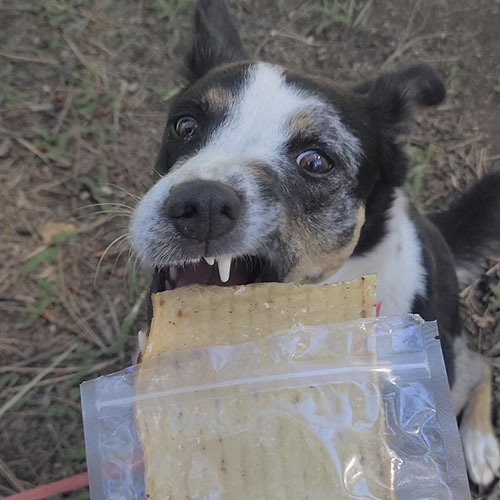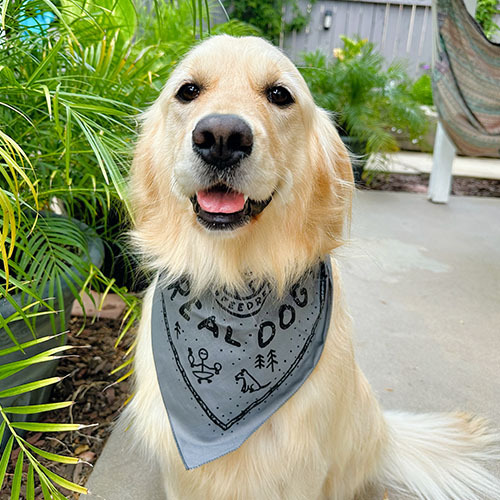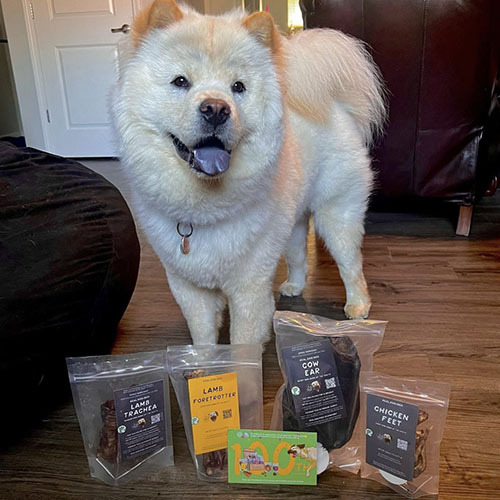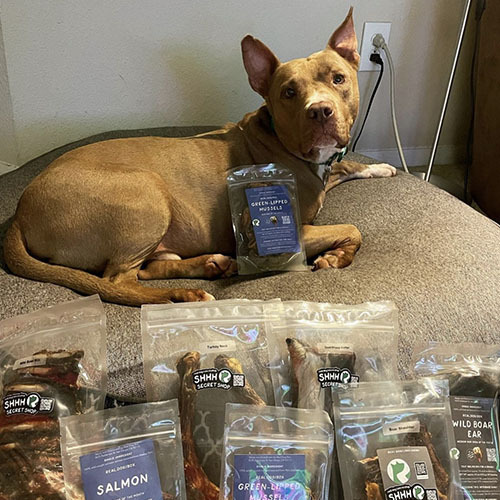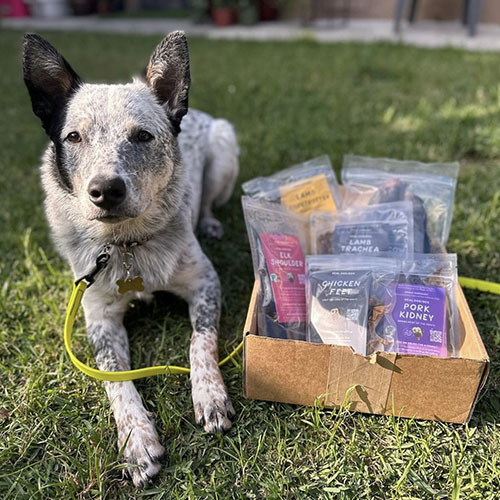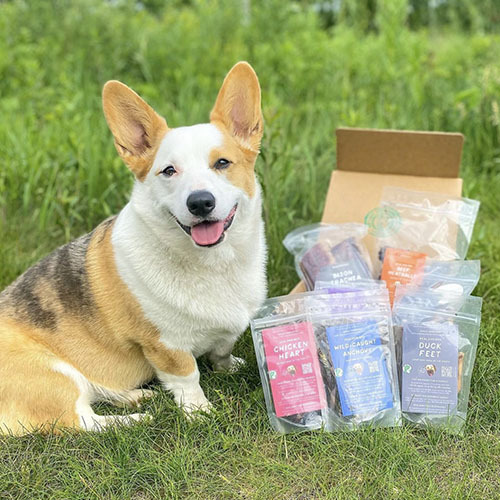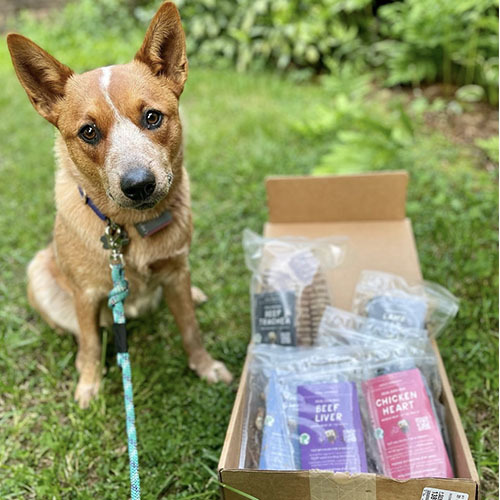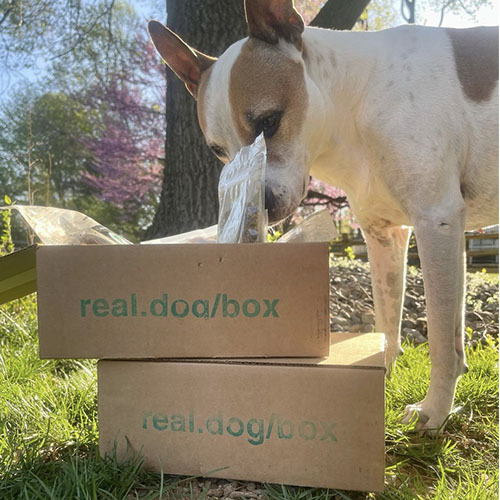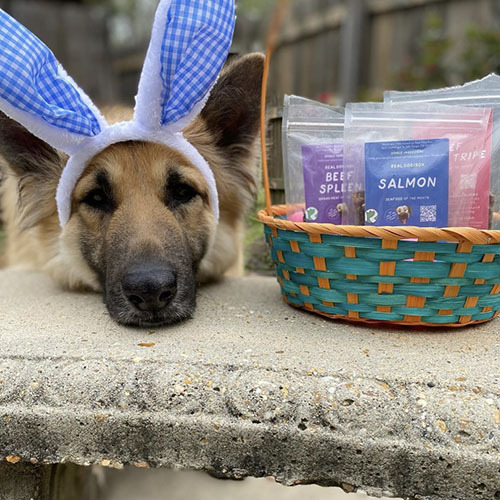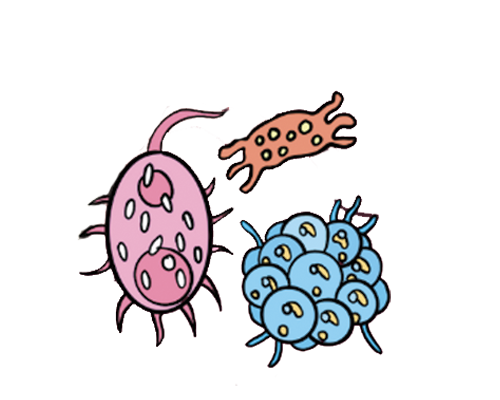
How To Introduce Real Dog Box Treats
Introduce Treats Slowly
Our premise is simple. We want your dog to eat more real food. That also means we hope you reduce the amount of processed food or ingredients that your dog is consuming.
Variety
A combination of muscle, organ, and seafood treats depending on your box type.
This selection will change every month because we believe that your dog will benefit from getting all of its nutrients from whole food sources and your dog cannot survive on chicken or beef alone.
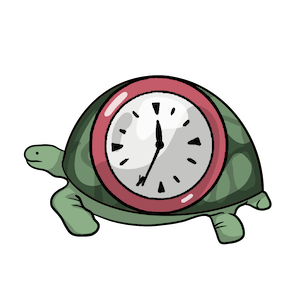
Go Slow
Start with one protein at a time!
Don’t introduce all proteins within the same 1-3 days, take it slow! Feed portions relative to the size of your dog. When in doubt, feed less. Watch your dog’s poops to assess how your dog is doing.
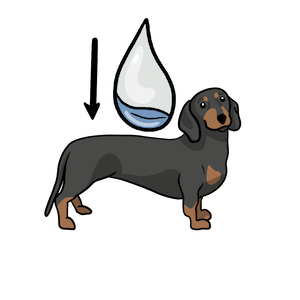
Water Loss
Our treats are approximately 10-15% of what their original weight was before they were dried.
That means a small amount goes a long way. We don’t look at treats like humans look at a bag of chips. We see treats as a way to add more fresh food to your dog’s diet.
We never recommend feeding a bag of treats in one sitting. We hope that the bag of treats lasts you until your next box.

Portion Feeding Guide
- Small dogs (under 20 pounds): One treat the size of two quarters
- Medium dogs (under 50 pounds): Two treats the size of three quarters
- Large dogs (under 100 pounds): Three treats the size of four quarters
- Giant dogs (over 100 pounds): Four treats the size of five quarters
Remember: These are general guidelines and all dogs are different. Always start with less than you think your dog can tolerate. You know your dog best. Always #feedresponsibly.
How Often Should You Feed Your Treats?
Once you have introduced your dog to each protein, you can feed the treats every day. Make sure you follow the daily recommended portion size.
You can feed muscle meats during training
You can feed as meal toppers
You can use the organ treats as meal toppers or to meet your dog’s daily organ intake
Slippery Elm & Marshmallow Root
Using a small amount of fiber, like slippery elm or marshmallow root, can help your dog adjust to new treats. It is most helpful when introducing a new chew or a new protein entirely. Slippery elm bark powder is well known in the fresh food world as the natural Pepto Bismol and our go-to for any digestive upset. Imagine yourself visiting a new country with entirely different cuisine and eating all different kinds of food-- you may feel sick after!
This is because it’s new to you and it’s normal! So don’t stress if your pup experiences some GI upset. Feed the slippery elm 30 minutes before you introduce the new chew.
If you forget to do this or don't have any slippery elm on hand, that's ok! Just remember to go slow when feeding your new chews and that a little adjustment period is normal.
Look out for hunching or whining, bloating and abdominal pain as these can be a sign of a blockage. While regurgitated bone in vomit is common and normal, repetitive diarrhea and vomiting can indicate there is a blockage.

It's an investment for your dog's life.
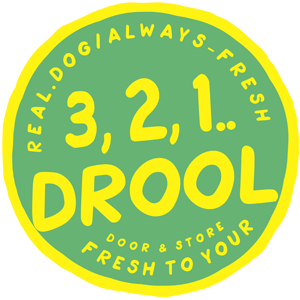 We craft our food in small batches, air-dry it in one single step, and deliver it fresh.
We craft our food in small batches, air-dry it in one single step, and deliver it fresh.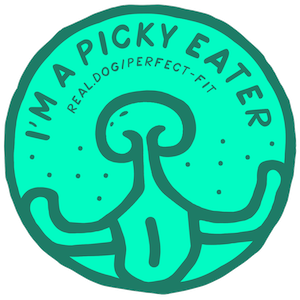 We guarantee that if your dog doesn’t love a treat, we’ll replace it for free.
We guarantee that if your dog doesn’t love a treat, we’ll replace it for free.